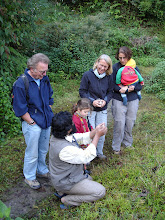
The Indian delegates was led by Mr.Goutam Ghose and the Dhaka delegates by Mr.Pijush Banerjee. The moderator for the Paharpur workshop was Mr.Shekhar Das and the Chief Guest was Mr.Safiqul Islam, DG-Archaeology. Dr.Nazmanara Khanum, the DC of Naogaon District was the Special Guest of the occasion. The workshop was opened by the film ‘Beyond Barriers’, a film by Ajoy Roy. The welcome address was made by Taufiq Rahman and the ground for the workshop was presented through a guideline explained by Raj Basu. The organizing part of the workshop and the Joypurhat hospitality was made successful by Shah Fakir Md. Rafiqul Islam Chowdhury Prince and Apurba Sarkar. Almost all delegates participated in the workshop and their inputs were noted as a part of the ‘Paharpur Declaration’. The points of ‘Paharpur Declaration’ and the delegates present were:
1. Tourism, peace and heritage conservation approach in cross-border initiatives.
2. Connectivity & Good roads connecting sites of Naogaon and Joypurhat Districts.
3. Basic tourist facilities like toilet complex, restaurant etc.
4. Interpretation and Guide facility at the sites, English speaking guides.
5. Highlight all heritage sites in a systematic way.
6. Sightseeing taxi facility at Joypurhat as this is important terminal for tourists.
7. Link Paharpur with Nalanda site.
8. Utilise other acquired lands in Paharpur for development purposes which helps locally.
9. Local employment opportunity through the Heritage sites for poverty alleviation. Local capacity development priority.
10. Impact analysis of tourism on the heritage sites and the management plan should address core and buffer areas.
11. Conservation master plan with local, district, national and cross border international levels.
12. Archeological department should identify a proper consultant to help the master plan.
13. Paharpur as the nucleus of the heritage cicuit of Bangladesh North Bengal.
14. Local committes or units at every heritage site for tourism to start with this initiative.
15. Ease the political boundaries between the two North Bengals as there was not so much restrictions before.
16. Safety and security of tourists/visitors.
17. Bangladesh to make easy visa facility for foreign tourists.
18. Local tourists of Bangladesh must visit their home sites.
19. Proper display of time and distance between the several sites.
20. Joypurhat to be promoted as the tourism base for visitors to Paharpur.
21. Establish A Regional Government Tourism office at Joypurhat for promoting and information about the sites of the region.
22. Awareness of local heritage sites at the local schools and at all public level.
23. Nogaon and Joypurhat to Prepare Hilli as a tourism facility site.
24. Picnickers mainly come as visitors and crosses a lakh, but the real tourists are negligible.
25. Longer stay at Paharpur for atleast 06 hours and develop the tourism product accordingly.
26. Local awareness among the people of Paharpur.
27. Promote Muktijodha base of Paharpur.
28. Foreign currency exchange facility.
29. Local culture team for tourism activity addition.
30. Government to be a good facilitator, business opportunity for the local people.
31. More trains between Hiili/Balurghat and Njp and better trains from Dhaka to Joypurhat, both for tourism.
32. Promote Paharpur through television medium and Government to promote mainly in Japan through advertisement to increase number of domestic and international tourists.
33. Archeological department to please confirm protection of all the heritage sites. Local awareness and participation in heritage conservation.
34. Include Heritage Tourism as subject in schools of Bangladesh.
35. International but regional level cultural exchange between Bangladesh and India.
36. India should have a tourism office in the Hilli/Balurghat area.
37. Visitor interpretetion centre at Paharpur.
38. Establish a network as ‘Paharpur Bandhu’ or ‘Friends of Paharpur’ with today’s members on a email base.
39. The project on tourism infrastructure has begun at Paharpur by tourism department.
40. 15 million ADB fund received and a part will be used for community based tourism as 1992 resolution.
41. No presence of the heritage sites with Paharpur present on the internet and hence a site to be launched with Paharpur.
42. The intercity train stoppage at Jamalpur Railway station.
43. Tourism Guide Association of Bangladesh will help in local guide training.
44. Local homestays to be promoted at priority basis and every household to be involved with good toilet facilities.
45. Moonlit Paharpur than can be promoted as product.
46. Bangladesh Travel Writers Association will help in publications on print and net.
47. Local people to take the responsibility to conserve the sites and the Government to help such initiatives.
48. Free and publications for sale of good quality should be available.
49. Promote Rabindranath Tagore’s Yatra and consider visitors as Tirtha Yatri to connect people.
50. Establish a helipad at Paharpur for tourists.
51. Reestablish the train route through Hardings Bridge, via Joypurhat between Calcutta to Darjeeling.
52. Department of Archaeology will help tourism but it should be kept in mind that no damage can be done to any site for tourism development.
53. Tourism has to be the growth engine in Bangladesh to be taken as a policy.
54. DC Madam, Nagaon has confirmed the participation in joint development of cross border tourism with adjoining North Bengal of India.
55. This initiative has increased people to people relation as said by DG Archaeology between Government, local people, visitors from Dhaka and visitors from India.
56. Trust and confidence building has to follow from this workshop in heritage tourism development and cross-border relation development by the present Government.
57. Tourism is a common demand in Bangladesh today and the Government is giving priority.
58. Host family culture exists in Bangladesh but this has to be nurtured and developed for the upcoming generation.
59. Schools have already been involved in educational tours to Paharpur and this will be made more elaborate in future.
60. Light and Sound show for Paharpur, which should include the days of Mahasthangarh.
For more details
Visit: http://www.viewsontourism.info/2010/paharpur-world-heritage-site-and-wtd-yatra-2010/




